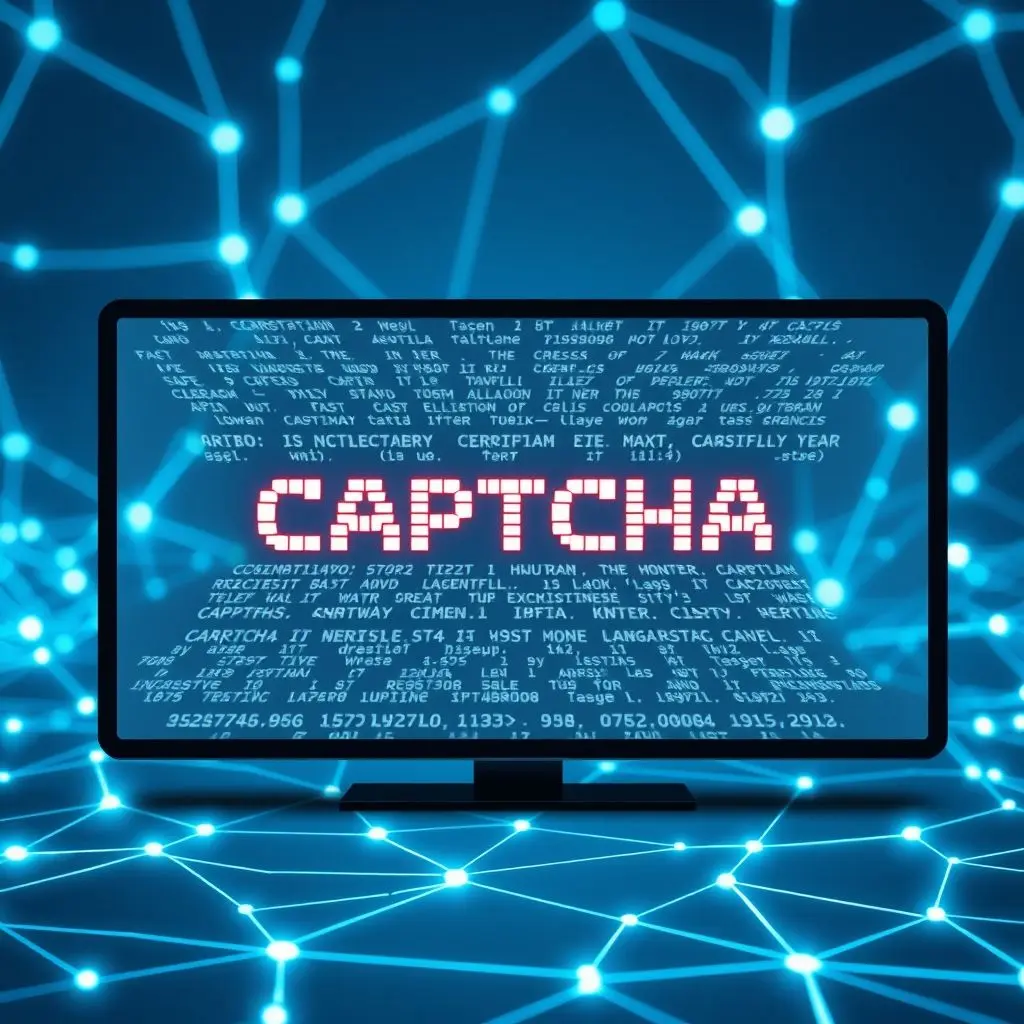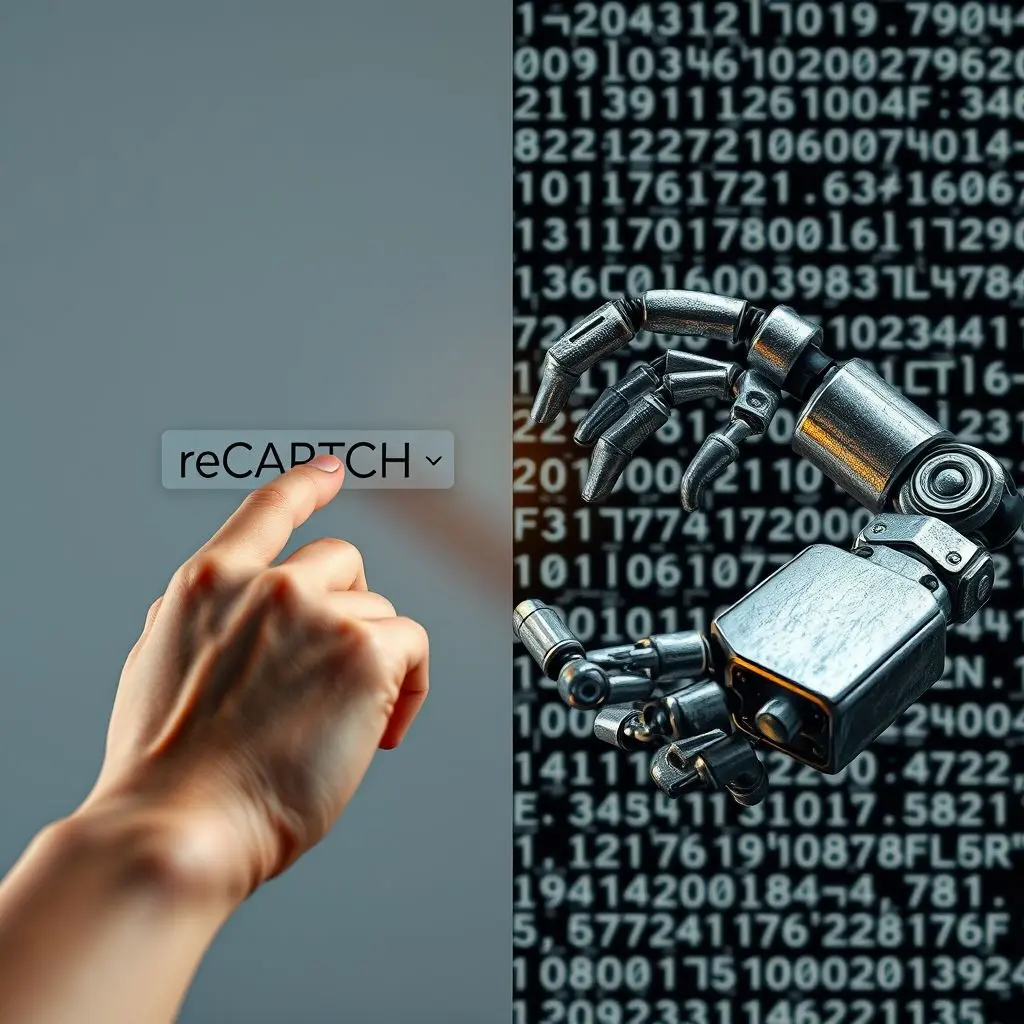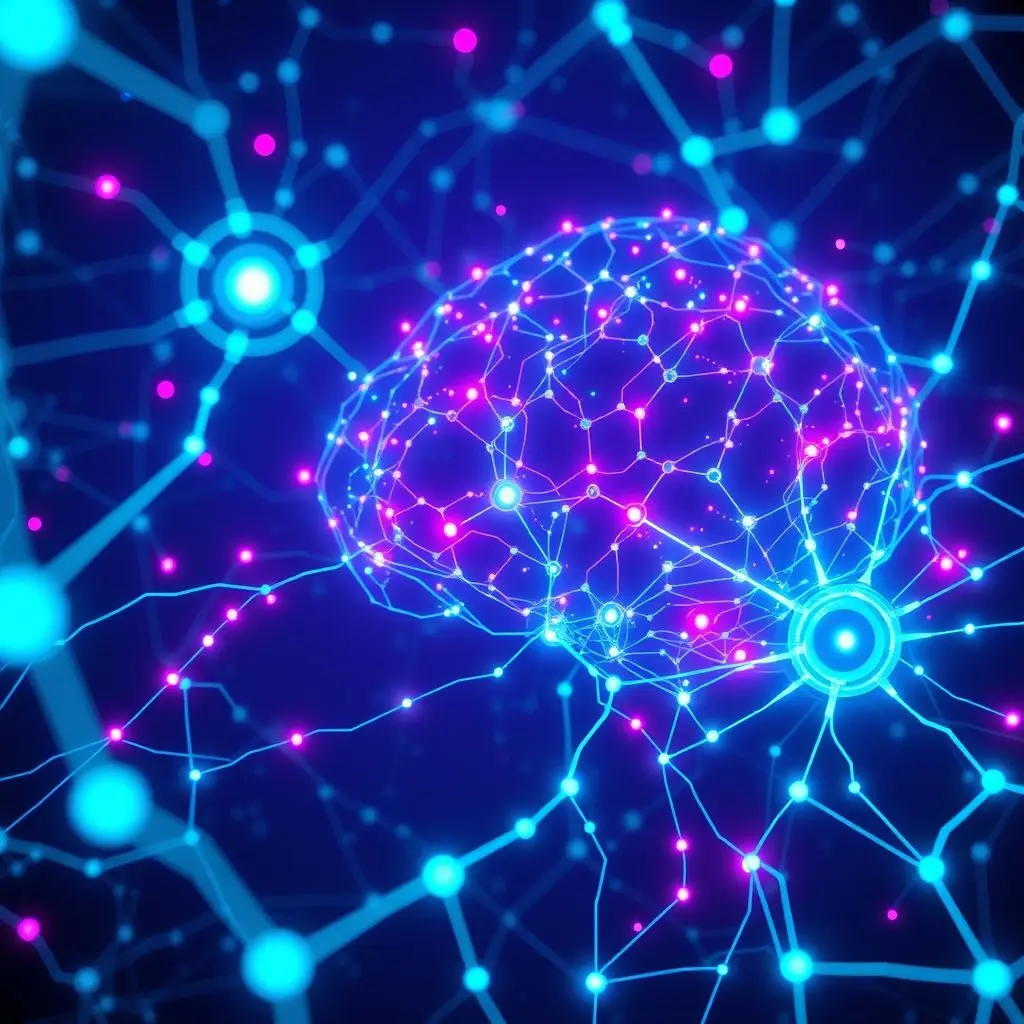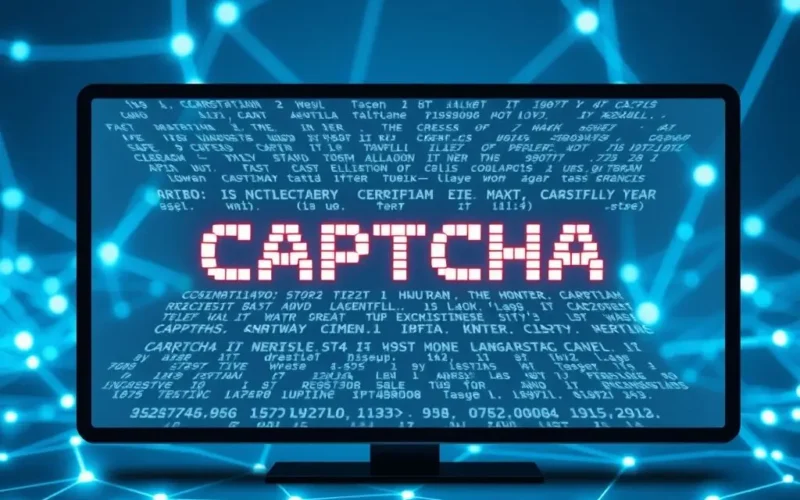Ever found yourself staring at a jumbled mess of letters, a grid of obscure images, or an audio clip, all while a little voice in your head screams, “Am I a robot?!” You’re not alone. This digital gatekeeper is known as CAPTCHA, and it’s a ubiquitous part of our online lives. But what exactly is it, and more importantly, in this age of advanced AI, how effective is it really?
CAPTCHA, an acronym for Completely Automated Public Turing test to tell Computers and Humans Apart, is essentially a digital bouncer. Its primary mission? To protect websites from the relentless onslaught of automated programs – bots – that aim to wreak havoc, spread spam, commit fraud, or launch brute-force attacks. It’s a clever little test designed to be easy for a human but incredibly difficult for a machine.
The concept is simple: if you can pass the test, you’re human; if you can’t, you’re probably a bot trying to sneak in. But here’s where the plot thickens: bots are getting unbelievably smart. The digital arms race between security measures and automation is a thrilling, high-stakes game. Want a quick dive into this fascinating world? Check out our rapid-fire explanation in this YouTube Short:
(Please replace _YOUTUBE_SHORTS_VIDEO_ID_ with the actual YouTube Shorts video ID for embedding.)
Table of Contents
What Exactly is a CAPTCHA? The Digital Bouncer Explained
At its core, a CAPTCHA is an interactive challenge-response test. It presents a task that relies on cognitive abilities, pattern recognition, or interpretation that, historically, only humans possessed. Think about it: recognizing distorted letters, identifying objects in cluttered images, or deciphering muffled speech are all tasks our brains are remarkably good at, but traditional computer algorithms struggle with.

The need for CAPTCHA arose from the explosion of internet spam and automated abuse. Early internet forms and forums were quickly overrun by bots signing up for accounts, posting malicious content, and generating fake traffic. CAPTCHA became a crucial line of defense against:
- Spam and Bot Registrations: Preventing automated creation of fake accounts on forums, social media, or email services.
- Fraudulent Transactions: Protecting online transactions from automated credit card stuffing or ticket scalping bots.
- Data Scraping: Thwarting bots from mass-collecting data from websites, which could be used for competitive analysis, price monitoring, or even malicious purposes.
- Brute-Force Attacks: Slowing down or stopping bots attempting to guess login credentials repeatedly.
- Denial of Service (DoS) Attacks: Preventing bots from overloading servers by flooding them with requests.
Evolution of CAPTCHA: From Squiggly Text to Invisible Checks
Like any effective security measure, CAPTCHA has had to evolve constantly to stay ahead of sophisticated adversaries. What started as simple distorted text has morphed into a complex suite of challenges.
Early Days: Text-Based CAPTCHAs
The original and most recognizable CAPTCHAs were simple images containing distorted, overlapping, or partially obscured letters and numbers. The idea was to make it difficult for Optical Character Recognition (OCR) software to read them, while humans could still squint and decipher the text. Google’s acquisition of reCAPTCHA in 2009 marked a significant leap, using CAPTCHA challenges to digitize books and historical archives by presenting words that OCR couldn’t reliably identify.
The Rise of Visual Challenges: Image-Based CAPTCHAs
As OCR technology improved, text-based CAPTCHAs became less effective. This led to the widespread adoption of image-based CAPTCHAs, particularly popularized by Google’s reCAPTCHA v2. Users are presented with a grid of images and asked to select all squares containing a specific object, such as traffic lights, bicycles, or crosswalks. This taps into human object recognition capabilities that were, at the time, far beyond what AI could achieve reliably.
Beyond Visuals: Audio & Logic-Based CAPTCHAs
For visually impaired users, audio CAPTCHAs provide an alternative, presenting distorted or noisy speech that users must type out. Logic-based CAPTCHAs sometimes appear, asking simple math questions or riddles, though these are less common due to their vulnerability to basic programming.
The Invisible Revolution: reCAPTCHA v2 and v3
The game truly changed with the introduction of behavioral analysis. No CAPTCHA reCAPTCHA (reCAPTCHA v2) introduced the famous “I’m not a robot” checkbox. Instead of a direct challenge, Google analyzes a user’s behavior leading up to the click – mouse movements, browsing history, IP address, and browser fingerprinting – to determine if they are likely human. Only if the system is suspicious does it present a traditional image challenge.

Even more advanced is reCAPTCHA v3, which operates almost entirely in the background. It assigns a score (from 0.0 to 1.0) to user interactions based on their behavior across an entire website. A low score might indicate a bot, allowing the website to take appropriate action (e.g., block the request, require further verification) without any explicit user interaction. This invisible security aims to provide a seamless user experience while still fending off automated threats.
The Digital Arms Race: How Bots Are Learning to Bypass CAPTCHA
Despite the advancements, the world of bots is constantly evolving, transforming the digital landscape into an ongoing arms race. As CAPTCHAs become more sophisticated, so do the methods bots employ to bypass them. It’s no longer just about blindly guessing; it’s about leveraging cutting-edge AI, machine learning, and even human ingenuity.
Advanced AI and Machine Learning for Visual and Text Challenges
The very technologies that power intelligent applications are now being weaponized against CAPTCHAs. For distorted text and image-based CAPTCHAs, bots employ:
- Deep Learning and Neural Networks: Sophisticated neural networks, particularly Convolutional Neural Networks (CNNs), are trained on massive datasets of solved CAPTCHAs. These models can learn to recognize patterns, distortions, and objects within images with surprising accuracy, often outperforming humans on specific CAPTCHA types. They can segment distorted text, identify objects in cluttered scenes, and even infer context.
- Improved Optical Character Recognition (OCR): Modern OCR engines, powered by AI, have become incredibly adept at deciphering even highly distorted or noisy text, rendering many traditional text CAPTCHAs obsolete.
- Computer Vision for Object Recognition: For image grid CAPTCHAs, advanced computer vision algorithms can identify and classify objects (like “cars” or “traffic lights”) within images, mimicking human recognition.
Speech-to-Text AI for Audio CAPTCHAs
Audio CAPTCHAs, once thought to be a robust alternative, are increasingly vulnerable to specialized speech-to-text AI. These models, trained on diverse audio datasets, can filter out noise and accurately transcribe distorted or mumbled speech, effectively nullifying the challenge.
Mimicking Human Behavior: Automated Browsing and Headless Browsers
For CAPTCHAs that rely on behavioral analysis (like reCAPTCHA v2 and v3), bots don’t just solve the challenge; they avoid it altogether by appearing to be human. This involves:
- Headless Browsers and Automation Frameworks: Tools like Selenium, Puppeteer, or Playwright allow bots to control a real web browser (or a simulated one without a graphical interface) programmatically. This enables them to navigate websites, click buttons, fill forms, and even simulate realistic mouse movements, scroll actions, and typing patterns.
- IP Rotation and Residential Proxies: To avoid detection based on IP address, advanced bots use large pools of rotating IP addresses, often legitimate residential IPs, making it difficult for CAPTCHA systems to flag them as suspicious.
- Sophisticated User Agent Strings and Fingerprinting: Bots can mimic diverse browser types, operating systems, and device characteristics, making it harder for systems to identify them as non-human based on browser fingerprinting.
The Human Element: CAPTCHA Solver Farms
Perhaps the most unexpected and disconcerting method of bypassing CAPTCHAs involves no AI at all – it’s pure human power. Human solver farms are real people, often in developing countries, paid minuscule amounts to solve CAPTCHAs around the clock. These services integrate via APIs, allowing bots to send a CAPTCHA image to the farm, where a human solves it and returns the answer within seconds. This method is incredibly effective because it leverages genuine human cognitive ability, making it virtually undetectable by automated systems. It highlights the ethical grey areas in the constant battle against bots.

The Future of Anti-Bot Measures: Beyond Traditional CAPTCHA
As bots continue to evolve, the industry is looking beyond traditional CAPTCHA challenges towards more sophisticated, often invisible, anti-bot measures. The goal is to verify human users without burdening them with puzzles.
- Advanced Behavioral Biometrics: Analyzing unique user patterns like typing cadence, scrolling speed, and even how a user holds their phone, creating a ‘digital fingerprint’ that’s hard for bots to replicate.
- Device Fingerprinting & Anomaly Detection: Continuously monitoring user devices and network connections for unusual activities or signatures that deviate from typical human behavior.
- AI-Driven Risk Scoring: Leveraging machine learning to build complex risk profiles based on a multitude of real-time signals, dynamically adjusting security challenges based on the perceived threat level.
- Web Application Firewalls (WAFs) and Bot Management Solutions: These dedicated security layers use rules, machine learning, and threat intelligence to identify and block malicious bot traffic before it even reaches a website’s core applications.
- Proof-of-Work Mechanisms: Requiring a small, computationally intensive task from a user (like solving a complex mathematical problem) before granting access. This is easy for one user but expensive for millions of bots.
The digital guard is constantly adapting, creating trickier tests, but bots evolve, putting their skills to the quest. It’s a perpetual dance between securing online spaces and the relentless pursuit of automation, ensuring that the human touch still defines legitimate online presence.

Frequently Asked Questions About CAPTCHAs
Why do I see CAPTCHAs so often?
You encounter CAPTCHAs frequently because websites are under constant attack from bots. The more interactions a website has, especially those involving user input or sensitive data, the more likely it is to implement CAPTCHA to protect against spam, fraud, and abuse. High-traffic sites or those with valuable content are prime targets.
Are CAPTCHAs an invasion of privacy?
This is a debated topic. While traditional CAPTCHAs (like typing distorted text) have minimal privacy implications, modern reCAPTCHA versions (especially v2 and v3) analyze user behavior, IP addresses, browser information, and sometimes even cookies to determine if a user is human. This data collection, even if anonymized, raises privacy concerns for some users. Google states this data is used solely for the purpose of distinguishing humans from bots and for security purposes.
What’s the difference between CAPTCHA and reCAPTCHA?
CAPTCHA is the general term for any test designed to differentiate humans from computers. reCAPTCHA is a specific CAPTCHA service owned by Google. Initially, reCAPTCHA used CAPTCHAs to help digitize books. Today, reCAPTCHA (especially v2 and v3) primarily uses behavioral analysis and advanced risk scoring, often requiring minimal or no user interaction, to make the human/bot distinction.
Can I avoid CAPTCHAs?
For the average user, completely avoiding CAPTCHAs is difficult as they are implemented by website owners. However, maintaining good browsing habits (not using VPNs that frequently change IPs, clearing cookies less often, not using automated tools) can sometimes lead to fewer challenges from behavioral CAPTCHAs like reCAPTCHA v3. For developers, integrating with legitimate bot management solutions can reduce the need for aggressive CAPTCHA challenges.
Is it true that solving CAPTCHAs helps train AI?
Yes, particularly with older versions of reCAPTCHA. When you solved a reCAPTCHA, especially image-based ones where you identified objects, your input was often used to train Google’s AI models for image recognition and self-driving car technology. Google would present two words or image sets: one it knew the answer to (to verify you were human) and one it was unsure about. Your correct answer on the known one would then validate your answer on the unknown one, effectively teaching the AI. While the primary purpose has shifted towards behavioral analysis with reCAPTCHA v3, the underlying principle of leveraging human intelligence to refine AI models remains.
Keeping Pace in the Digital Frontier
The journey of CAPTCHA, from its humble beginnings as squiggly text to its current manifestation as an invisible guardian, reflects the relentless pace of innovation in cybersecurity. It’s a testament to the ingenuity on both sides of the fence – the defenders striving to protect online spaces and the attackers seeking to exploit them. As AI continues its rapid ascent, the methods for distinguishing human from machine will only grow more subtle and complex. Our digital lives depend on this ongoing evolution, ensuring that online interactions remain primarily for us, the humans. So, next time you solve a CAPTCHA, remember: you’re not just proving you’re not a robot; you’re a crucial part of the internet’s ever-evolving defense system.





